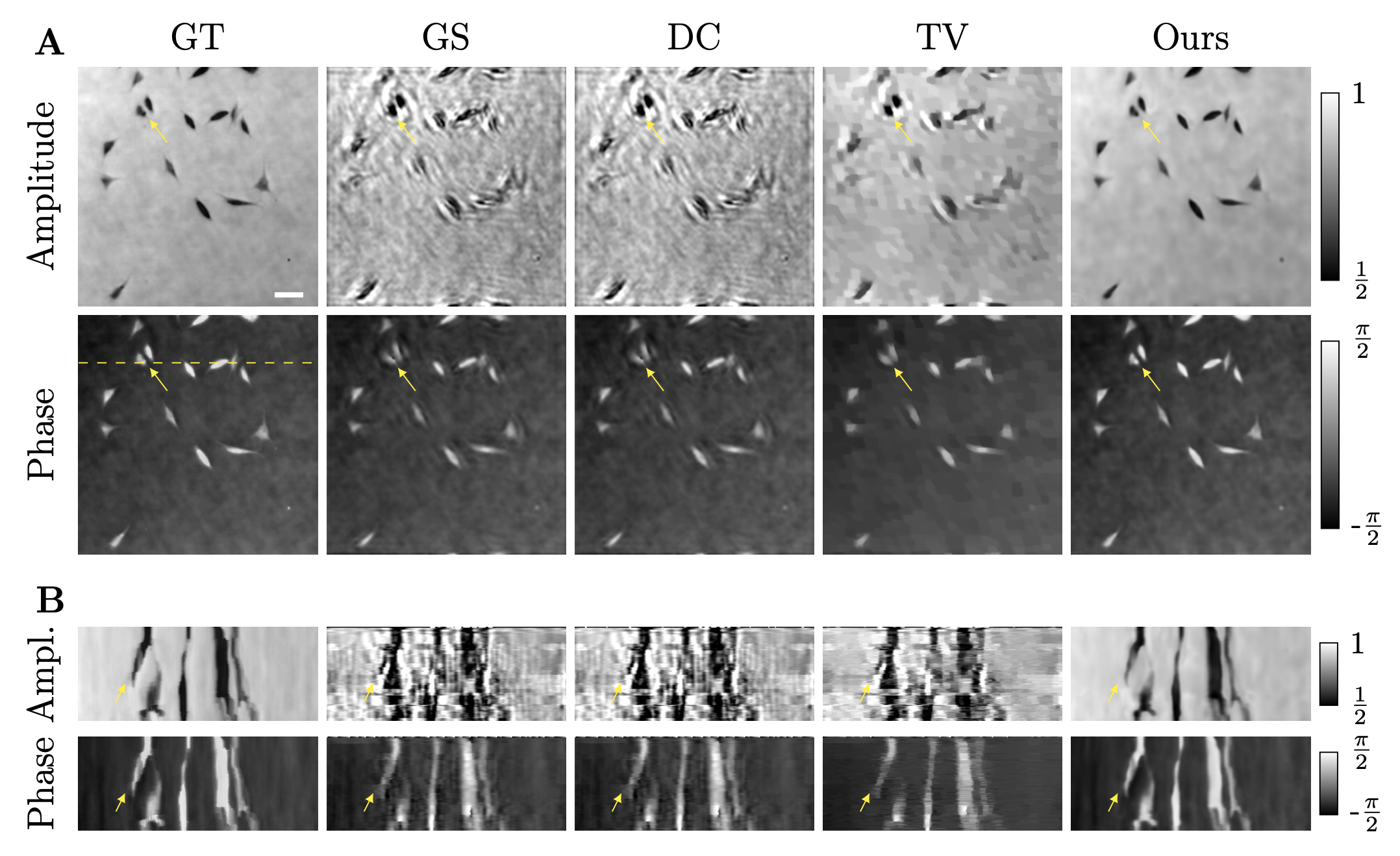Spatio-temporal Fourier Ptychography: Classical vs Learned Regularisation
Spring 2023
Master Semester Project
Project: 00439

Fourier ptychography (FP) involves the acquisition of several low-resolution intensity images of a sample under varying illumination angles. They are then combined into a high-resolution complex-valued image by solving a phase-retrieval problem. The objective in dynamic FP is to obtain a sequence of high-resolution images of a moving sample. There, the application of standard frame-by-frame reconstruction methods limits the temporal resolution due to the large number of measurements that must be acquired for each frame. Instead, as the movement between frames is in general small, we can couple the reconstructions in terms of a deformation model. Here, we can either rely on classical optimal transport models or incorporate a learning-based model. The aim of this project is to implement the optimal-transport-based model using the Geomloss library in PyTorch, and then compare it with our existing learning-based model.
- Supervisors
- Sebastian Neumayer, sebastian.neumayer@epfl.ch, BM 4.138
- Pakshal Bohra, pakshal.bohra@epfl.ch, BM 4.141